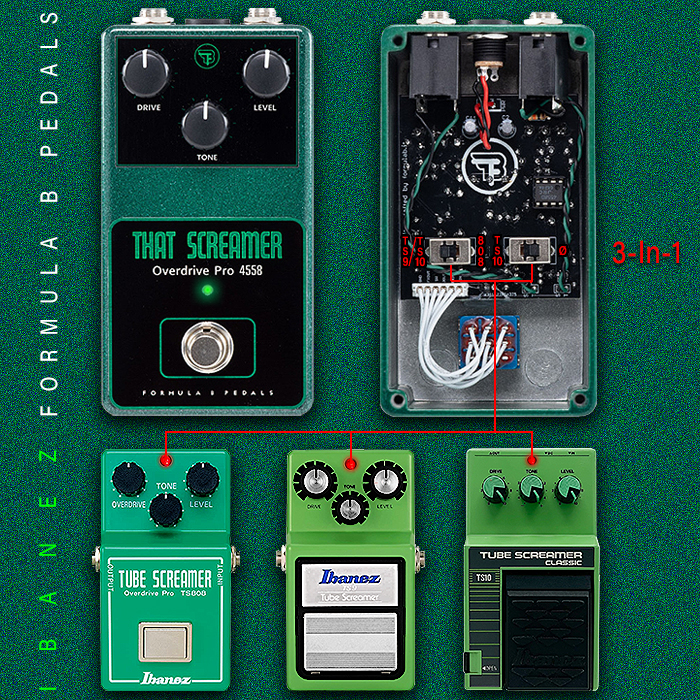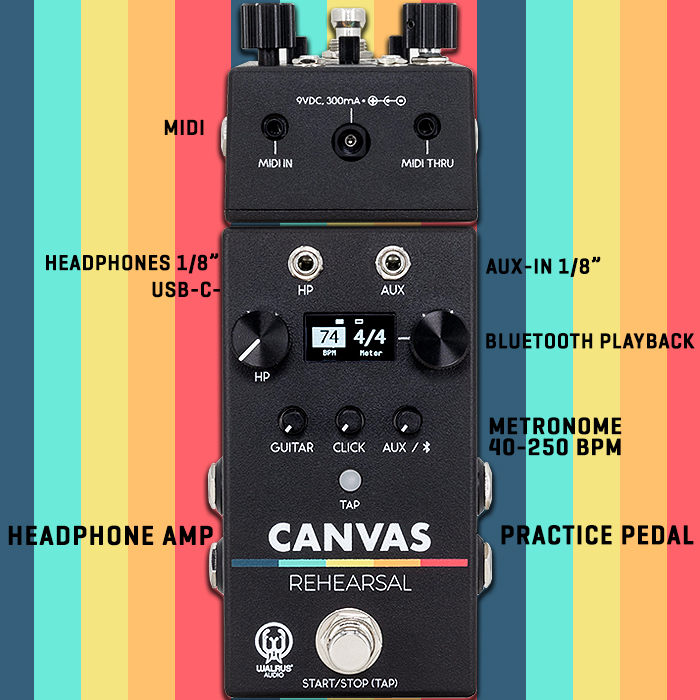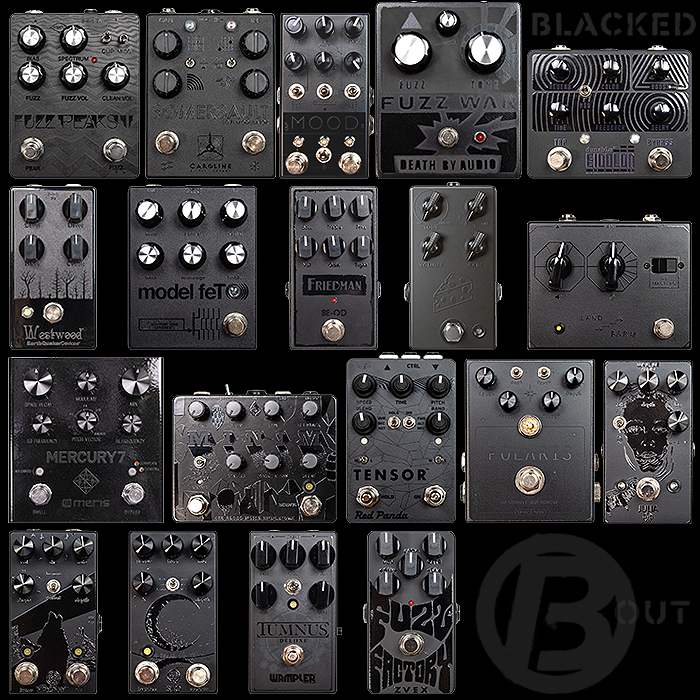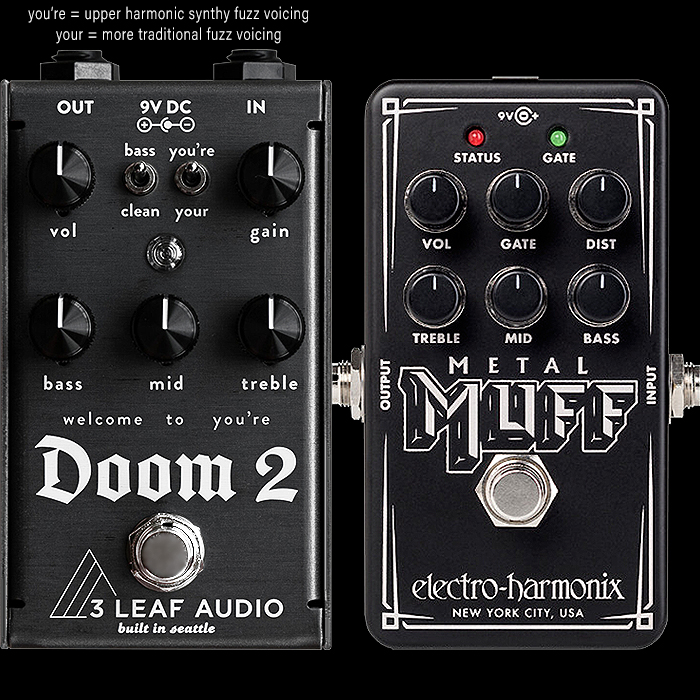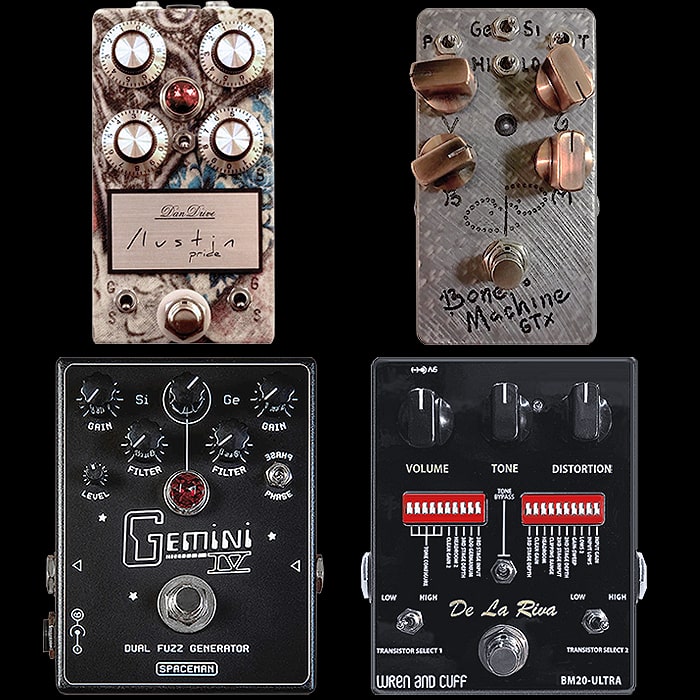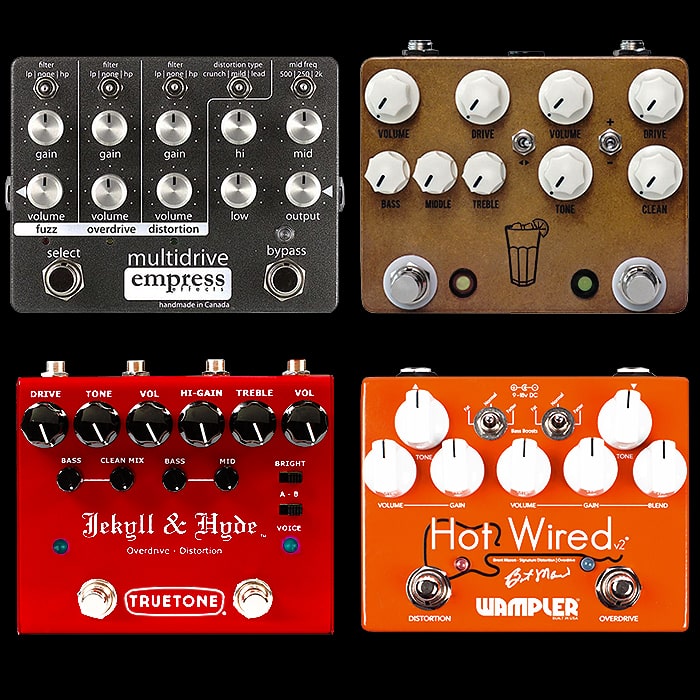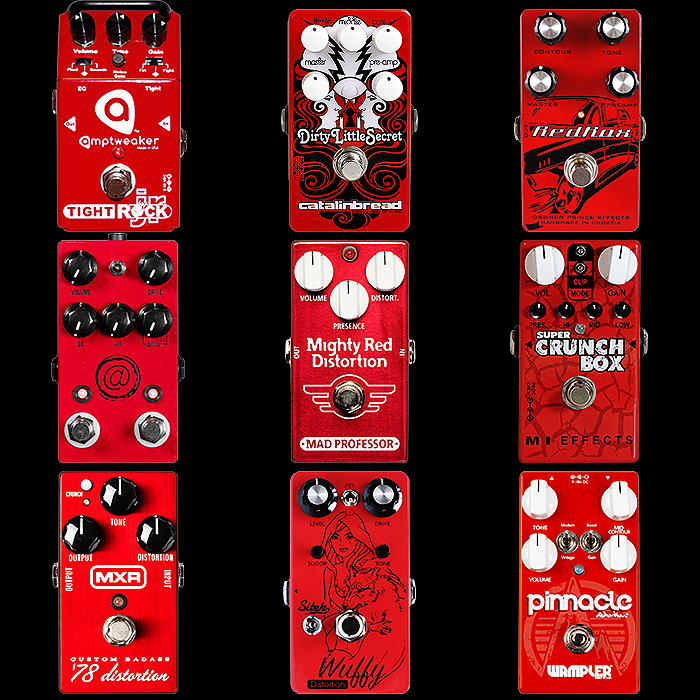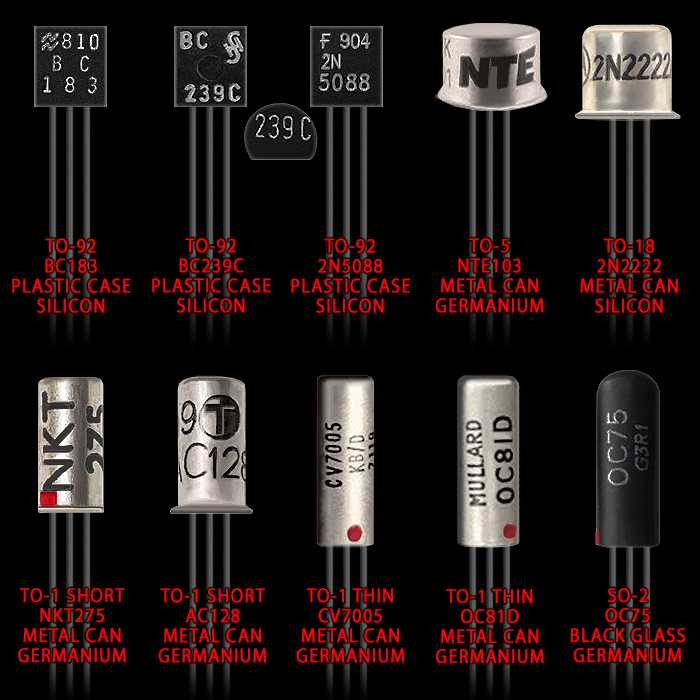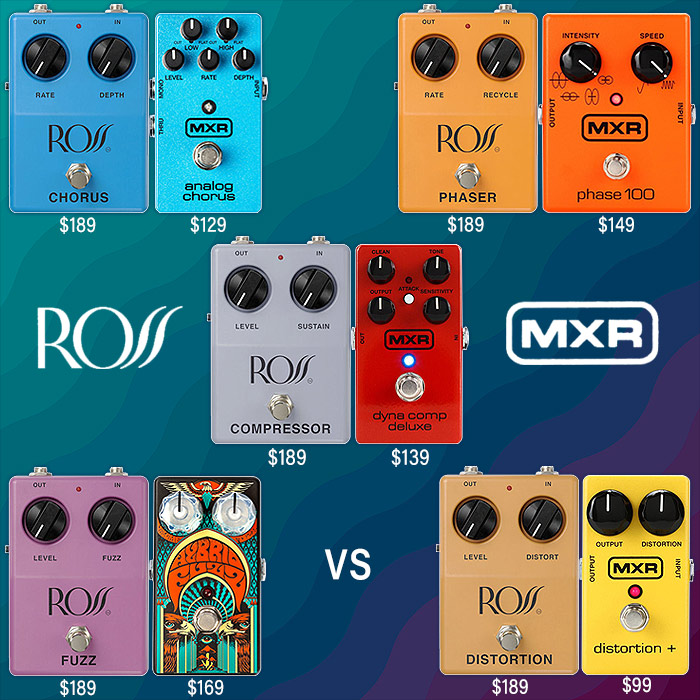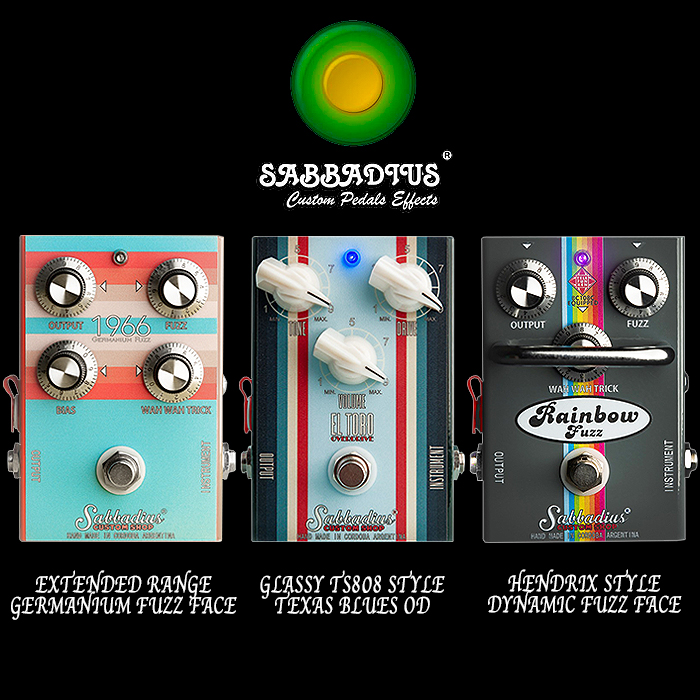JHS Launches Affordable Legends of Fuzz Series

Several people predicted that following on from the pricey $400 hand-wired 1966 Range - which I wasn’t entirely complementary about - that Josh Scott would release more mainstream SMD style devices covering the same sort of territory. In the launch video (per Final Thoughts below) Josh mentioned that there would likely be 10 pedals in this new series - with the above 4 being the first available. I expect the Legends of Fuzz Series to overlap very significantly with the 1966 Range eventually - meaning that there will be more Tone Benders, Fuzz Faces and Big Muff variants for sure along with some of the more unusual ones - possibly a Roland AF-100 Bee Baa Fuzz derivative or similar.
I’m always amused at how wrong some of the demonstrators get the facts and the details - some describing these as faithful reproductions (which they’re not), and some stating that the knobs were front-facing? While they’re distinctly rear-mounted or top-mounted depending on your perspective!
If you have opened up the fairly recent JHS Cheese Ball or MXR Brown Acid Fuzzes and inspected their guts - then this is likely the style of manufacture here - PCB’s with SMD’s or surface mounted devices - meaning those tiny little 3-pronged chip-like transistors etc. - with just the odd full size component - typically one or two canned or WIMA style capacitors and the like - these can be fully automatically manufactured and fed into machines like ammunition-belts on smart component strips.
Overall I feel this is a much better proposition than the 1966 x 4 Range as its pricing here is pretty spot on to what it should be or at $179 per unit - labor-day discounted at the moment down to $152 at some dealers. So I feel the pricing is pretty fair, along with the functionality. These are not exactly extended-range fuzzes, but each has at least an alternative voicing via red left-hand-side JHS Mode Button Switch - which typically and variously adjusts Mids, Gain and Gating, while on the Supreme there are 2 push-buttons - one for Mode and another for Tone.
Those who know me will know that I’m not overly enamoured with rear-mounted-knob pedals - they are not in the slightest bit pedalboard friendly in my opinion, and it’s usually difficult to see what the dials are set to. JHS has tried to mitigate this with a small white dot on the reverse side of the knobs - opposite to the indicator line that is - but the dot is so small that it’s nigh impossible to see. On a variety of pedalboards these knobs would be butting up against the second or third row and getting in the way of some of the cabling. Ergonomically this is just a non-optimal design - and is a reason for why I did not take to the Beetronics Babee / Fatbee series - which is otherwise a pretty neat and good-looking execution. The rear-mounted knobs though will always kill the deal for me. Even if they have that dual concentric construction with a window to display the numerical value dialled in - they’re just not as immediately obvious or as tweakable as proper top-mounted knobs - and you can’t use your toes to adjust which I do a fair amount! I don’t mind the wedge shape per se - but these are pretty close to vertical medium format - versus compacts - so would not rank as particularly ’pedalboard-friendly’ in my book. Construction and execution though seems pretty decent and they do have top-mounted jacks - which is very rare for JHS.
I would classify these as near as darnit ’Tonal Adaptations’ - where mass-manufacturing components have been selected and paired as closely as possible to match the tonal profiles of the original pedals. I don’t think you could classify these as replicas or reproductions as they’re not faithfully accurate to the originals beyond the simulated tonal signature and the controls. I feel that for the Silicon / BC108 style Smiley Fuzz Face that this is probably the closest in tone and dynamics to the original inspiration - while Josh also has a way with Big Muffs - and the Sovtek-style Crimson comes plenty close enough too. For the Super-Fuzz and Tone Bender I can hear distinct variations in the texture, character, bloom, creamy saturation and higher frequency harmonics - where the copies just don’t quite reach the lofty heights / textures / timbres of the originals.
Calling the Sovtek Red Army Overdrive a distinctly unique Big Muff is not entirely correct either as the Red Army Overdrive and Civil War Fuzzes overlapped exactly with the same circuit - while only the enclosure was different. You need but refer to the fantastic Kitrae Big Muff Page / Bible to get the full breakdown on that. And there are several excellent extended range Civil War -style Muffs out there that are equally if not more impressive.
It surprises me to a degree just how much hype these JHS Fuzz launches garner - as if Josh Scott has invented or innovated something exceptionally different here - where there are several specialist full-range Fuzz Pedal Builders that have been doing properly more authentic varieties of these for years and decades even - Builders like John Lyons of Basic Audio, Marc Ahlfs of Skreddy Pedals, Mike Piera of Analog.Man, Matt Pasquerella of Stomp Under Foot, Richard Coibion of Monsterpiece, Matthew Holl at Wren and Cuff, Scotty Smith of ProAnalog Devices, Greg Djerrahian of SolidGoldFX, Mike Vickery of Vick Audio, Tim Webster of Fredric Effects, Dan Querner of DanDrive Pedal, Sof Tebboune of Expresso FX, Daniel Thornhill of Fjord Fuzz - and not to mention The Three Fuzz Lords - Stu Castledine, Steve Williams (Pigdog) and David Main (D*A*M) (Note - apologies to anyone I may have inadvertently overlooked here). Some of these are somewhat closer to the 1966 Range pricing bracket, but most here are in and around the $200 bracket. You could, and still can get fantastic versions of these circuits with a little more hands-on care and attention put into them! That’s not to say the Legends of Fuzz Series doesn’t have its own merits - but the way some people have been going on is as if they’ve witnessed the second coming.
These JHS Legends of Fuzz units are decent, well-designed, but mass-manufactured adaptations of those original circuits. Some get tonally very close - almost indiscernibly so, while for others there are obvious differences if you know what to listen out for. From the standpoint of authenticity - Andy Martin’s Demo is by far and away the best benchmark in comparing the copies to the originals - he really knows each of those fuzzes and how to get the very best out of them - some of the other demonstrators seemed to be encountering some of these varieties for the first time. In terms of my own credentials in this area - I now have 206 Fuzz Pedals alone in my collection - with extensive coverage of most varieties, and including 52 Big Muffs, 50 Fuzz Faces, 31 Tone Benders and 21 Octave Fuzzes - including 10 Super-Fuzzes. So while I may not have sampled every single variation - I’ve really pretty much covered most of these avenues over the years - each of my collected pedals has its own distinctive character / personality and voicing - and encourages different styles of playing - I love them all!
Here follows a little more detail and analysis on each of the featured varieties :
1969 London Smiley Fuzz (based on BC108 Silicon Style Arbiter Fuzz Face edition) - $179 (currently discounted to $152 in many place)
This to my ears comes closest to the original variety which I assume is the more searing BC108 Transistor unit. The dynamics and character of the fuzz are pretty spot on here and each of the demonstrators gets fantastic tones out of the Smiley. I personally like my fuzzes to have Bias or further Tone controls as necessary - while here we have just the classic Volume and Fuzz knobs. The Red JHS Mode side-button engages a secondary voicing which sends the Smiley into high gain gated fuzz territory - which is admittedly a really neat feature. There isn't much more to say here - this is a pretty exacting near as darnit Silicon Fuzz Face Tonal Replica - and if you get it for $152 you've got nothing to complain about (apart from enclosure ergonomics).
Choice alternatives include : Analog.Man BC108 Sun Face, Basic Audio Spooky Tooth, Boss FZ-3 Fuzz, Chase Tone Fuzz Fella BC108C Fuzz, DanDrive Working Man Fuzz, Expresso FX BC109 Silicon Fuzz, Monsterpiece Scratchy Snatch BC108 6K Fuzz, Skreddy BC109 Fuzz, SolidGoldFX If 6 Was 9 BC108 Fuzz, Stomp Under Foot Hellephant Fuzz, Tate FX Raise The Dead Fuzz, ThorpyFX The Veteran Fuzz + Boost
1972 Japan Supreme Fuzz (based on Univox Super-Fuzz Black/Grey edition) - $179 (currently discounted to $152 in many place)
Rabea has some very poignant pointers on the Super-Fuzz circuit - explaining the blooming nature of the fuzz - and how this should ideally be played to get the most out of its nature and tonality. As I mentioned - I have a number of amazing Super-Fuzz style pedals - and it's all about the textures and waves of harmonics which ebb and bloom - this can be something of a runaway fuzz if you don't handle it properly - and you can end up with a total mess of a sound if you're not careful. When applied correctly though you get that phenomenally rich wall of sound which ebbs and blooms in waves as I like to describe it. Here I can discern significant differences in the complexity and character / timbre of those higher frequency harmonics and distortion artefacts in particular. Here the JHS Mode push-button is joined by a second additional Tone push-button - the former boosts and intensifies the upper octave and mid frequencies while the Tone button flattens / subdues / cuts the mid frequencies.
Choice alternatives include - Bearfoot FX Candiru Fuzz, Boss FX-2 Fuzz, Dead FX I Can't Feel myFace Mini Super-Fuzz, Fjord Fuzz Gjallarhorn, JPTR FX Add Violence Planetary Disorder Unit Fuzz, Malekko Omicron Mini Fuzz, Sitek Pandora Fuzz, SolidGoldFX 76 / 76-Plus Fuzz, Toneczar Vault Fuzz
1973 London Bender Fuzz (based on Sola Sound MKIII Germanium Tone-Bender Onamatopoeia 'Fuzz' edition) - $179 (currently discounted to $152 in many place)
This is a pretty decent sounding MKIII variant, but authentic it is not as it drops the original's now NOS germanium transistors and tries to replicate with Silicon SMD near-match variants. And while there is a significant science of Germanium style replication - as with the BC183 style of Fuzz Faces, with more distinctly voiced variants like the MKIII - you can straight away discern differences to that core creamy saturation and upper frequency harmonics. This is a pretty decent MKIII style of Tone Bender - not altogether dissimilar to the MXR CS Brown Acid Fuzz - and not quite as good as EQD's Germanium Black Ash - while the Pigdog JuJu MKIII is probably the champ here. I feel both the Tone Bender and Super Fuzz replicas are discernibly different to my ears - while the other two are much much closer. The JHS Mode push-button pushes the mid-frequencies and gain here for a stronger more boosted / more attacking flavour.
Choice alternatives include - Basic Audio Scarab Deluxe Fuzz, Earthquaker Devices Black Ash, Fulltone Soul-Bender, Function F(x) Professional MKIII Mini, JHS Firefly Fuzz, MXR Brown Acid Fuzz (Silicon), Pigdog Pedals JuJu MKIII, ProAnalog Devices MKIV Vintage Fuzz
1992 Russia Crimson Fuzz (based on Sovtek Red Army Overdrive edition cv. *Civil War Big Muff) - $179 (currently discounted to $152 in many place)
As I've noted and per the singular Big Muff authority Kitrae - the Sovtek Red Army Overdrive was internally indistinguishable from a Civil War Big Muff edition - they just had different enclosures - much like the Tone Bender MKIII/MKIV saga. Josh is obviously trying to reach for a very specific tonality here and I think this and the Silicon Fuzz Face are the closest matches of this quartet set. Josh has proven to be a dab hand with Muff Circuits - of course per his excellent Muffuletta Muff Compendium pedal - which indeed has a Civil War variety onboard. There was a lot of similarity between the Sovtek era differently named and enclosured Muff pedals - and several editions had pretty much identical components. People often forget that Fuzzes were largely made from surplus / cheap components and builders used whatever they could get their hands on - so there wasn't always a rhyme or reason why they changed components - besides the fact that they just ran out of that particular batch. Transistor manufacturers at the time were a little slapdash with their quality control too - as many builders can attest too - and seeking out consistently reliable matching sets of transistors can be something of a needle in a haystack job - particularly with some of those canned varieties - no so much the TO-92's though. So there is a little hype here in the specifics of the Red Army Overdrive - in fact also vis-a-vis the particular Black/Grey Super-Fuzz variant - a lot of the time those were just cosmetic changes born out of necessity. So yes this is a decent Muff variety - but you should be able to get there equally well with an extended range Civil War -style Muff. The JHS Mode push-button here is that classic Big Muff mids-boost that so many of those more modern Muff pedals have.
Choice alternatives include : Jam Pedals Red Muck V2 Fuzz, JHS Muffuletta Multi-Muff, Mojo Hand FX Colossus, Stomp Under Foot Civil Unrest Fuzz, Skreddy Pedals Perestroika Fuzz, Vick Audio 1861, Wren and Cuff Small Foot Box of War (Custom)
Final Thoughts
Despite some of my criticisms - there is actually quite a lot to like here. I admire Josh for his ambition and his work ethics and proficiency - and he's delivered some very useful fuzz varieties here to get newbies interested in and excited by Fuzz which is all great for me - as it's a subject close to my own heart.
I do feel he's sometimes a little free and easy with the truth - putting a lot of effort into shaping the authenticity of his narrative which though doesn't alway ring 100% true through to his final execution - certainly not in the realms of full transparency and nothing but the truth. He seems loathe to go into the specifics of his own actual circuits and their component content - which is kind of at odds with my relationships with my favourite builders - I like to know which ingredients are going into my cake as such!
I've seen a lot of people get carried away by the Crimson variant here - which is certainly a really decent take on that variety - but not quite as rare or special as Josh makes it out to be. I feel there are plenty of decent alternatives - better variations of the TBIII - certainly more authentic ones. Same with the Super-Fuzz - which for me is very close but just not quite there on the bit that kind of matters to me. I think the overall winner here is probably the Smiley - which just happens to be the simplest and most honest circuit here too.
If you're new to fuzz then I feel you are getting a pretty solid deal/product for your money - particularly if you buy at the discounted $152 rate. I do feel you can get better value still though - with second hand and other alternatives - which have a little more magic and sparkle about them. I would say the Fuzz Face and Muff here are very decent and the other two are probably close enough for most - but not really for us slightly more seasoned campaigners.
I just wish people approached this all a little more sensibly and with a little more due diligence - but then again you can simply read my considered take on it all ... and then make up your own mind.











